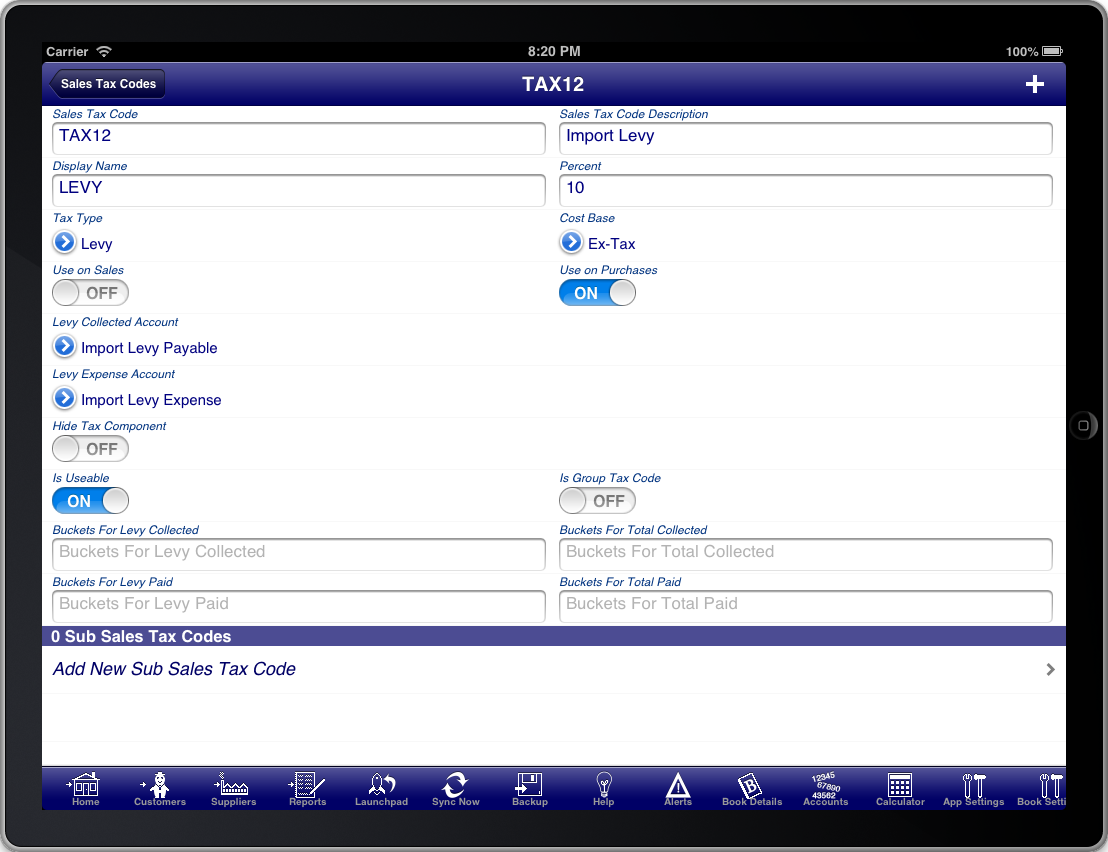| Main Page | Overview | Introduction | Editions | Reviews | Changes | Help | FAQ | Guides | Contact | EULA | Privacy |
Applying Levies
Levies can be applied as part of the sales tax calculations to determine and record obligations that you incur when purchasing or selling goods or services.
Common levies are import and export taxes. In Venezuela the seller is required to remit part of the VAT obligation of the purchaser and this too can be set up as a levy. In some states of the USA businesses are required to remit a levy for certain imports from other states into that state.
When a levy is calculated it is applied separate from the sales tax components of the transaction. The levy is calculated based upon the transaction values however it is recorded against levy accounts as an accrued obligation.
For example:
You might purchase goods from another state and pay no sales tax, however you might be required to remit a 10% levy for importing those goods into the state.
In this case you would set up a sales tax code with a "Tax Type" of "Levy" and a percentage of 10%.

Levy Example
In this example when you purchased items, that had no sales tax but required you to pay a levy for importing the goods, you would select the "LEVY" sales tax code for the purchased items. The levy would be calculated based upon the value of the goods excluding sales tax. This would be recorded as an additional expense for purchasing the items, and would also be recorded as a liability or obligation that you were required to pay.
If you need to apply sales tax and a levy then simply create a sales tax group and then create the sales tax code as a sub sales tax code of the group, and also create a levy tax code as another sub sales tax code for the group. Then on transactions (sales and purchases) use the group tax code instead of the individual tax codes.